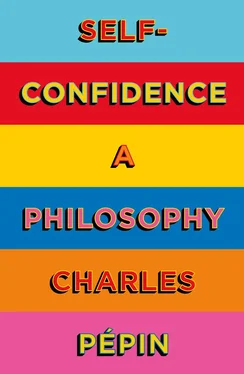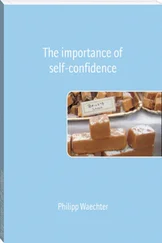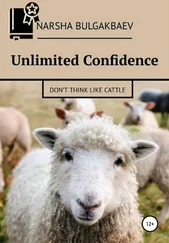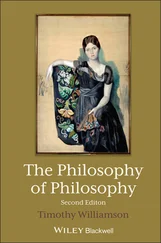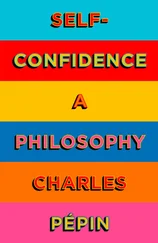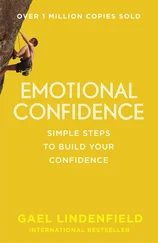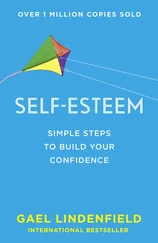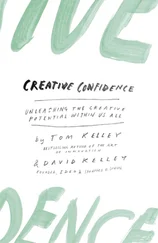Clearly, Anders Ericsson’s findings are not strictly speaking scientific: his theory that excellence can be achieved in any field with 10,000 hours of practice is neither verifiable nor refutable. And when Gladwell uses the work of neuroscientist Daniel Levitin to support the thesis that 10,000 hours is the time it takes the brain to master any discipline, he seems to be reaching for scientific validation. There are many reasons to be wary of this thesis. But I have to admit I find it quite seductive. It makes us realise that even among geniuses, confidence takes time to achieve. It develops in tandem with growing competence that, as it becomes integrated in stages and incorporated, has a liberating effect. Confidence is not innate but something that is largely acquired.
‘Genius,’ as Thomas Edison put it, ‘is 1 per cent inspiration and 99 per cent perspiration.’ We shouldn’t forget this when we start to have doubts about ourselves. Often, when our confidence is at a low ebb, we start to think that we lack talent, that we aren’t good at what we do, when in fact it’s just a matter of not having trained enough. Whenever doubt starts to gain the upper hand, whenever we’re afraid that we won’t measure up, the best thing to do is to bolster our confidence by actively developing our skills, rather than invoking some hypothetical lack of talent. Gladwell’s unusual book reminds us of this: Mozart was perhaps an inspired genius, but he also perspired a great deal. He even perspired considerably more than many musicians less inspired than he. Keeping this in mind can help us draw strength from his example.
But Gladwell is only interested in a very localised confidence, focused on the skill on which 10,000 hours of practice have been devoted. True self-confidence, on the other hand, is much broader in extent. It goes beyond the mastery of a single discipline, even if that mastery contributes to it.
Through her skill at tennis and the great success it has brought her, Serena Williams has acquired a sense of confidence that is not limited to the tennis court. When she makes her voice heard nowadays, it is no longer just as a high-ranking sports figure but as a woman, a mother, a citizen, and a feminist. And her voice finds a wide audience.
In 2016, she published an open letter denouncing sexism in sports and the persistent inequality between the sexes. Here is an excerpt: ‘What others marked as flaws or disadvantages about myself – my race, my gender – I embraced as fuel for my success. I never let anything or anyone define me or my potential … Women have to break down many barriers on the road to success. One of those barriers is the way we are constantly reminded we are not men, as if it is a flaw. People call me one of the ‘world’s greatest female athletes’. Do they say LeBron is one of the world’s best male athletes? Is Tiger? Federer? Why not? We should never let this go unchallenged. We should always be judged by our achievements, not by our gender.’
Serena’s confidence is also a transformation of her prowess. By training for all those years, day after day, by hitting balls for hours, she didn’t just train at tennis. On a daily basis, she showed her strength of will, her hunger for achievement, her ability to overcome obstacles. The confidence that now allows her to take courageous positions is the fruit of that experience. As she developed her skill at hitting serves, as she worked on her forehand and her backhand, she became aware of her own power and her drive for life. On the tennis court and everywhere else. By playing tennis, she discovered her own truth, she reached deep within herself and found remarkable resources.
By developing our range within a discipline, we are fortunately able to gain a broader self-confidence. Our experience in that discipline, whatever it may be, can then serve as a fulcrum. ‘Give me a fulcrum, and with my lever I can move the earth,’ said Archimedes. Because our self-confidence plays an important role in how we act, how we engage with the world, everything that anchors us to reality can serve as a base, a springboard.
‘All consciousness is consciousness of something,’ said the German philosopher Edmund Husserl. He meant that we become conscious of ourselves by being conscious of something other than ourselves. For example, because I am conscious of the taste of coffee in my mouth and of the cup I’m holding in my hand, I am conscious of myself. But I am not conscious of myself in a pure, abstract, or disembodied way.
The same goes for self-confidence. In order to feel confidence in ourselves, we must first feel confidence based on specific actions. To paraphrase Husserl, we could say that ‘all self-confidence is confidence in the accomplishment of something’. We need concrete experiences, specific skills, and real successes in order to have confidence in ourselves. So let’s not hesitate to celebrate our successes, even the small ones – they are so many stages along the way to full-blown self-confidence. We sense this when we congratulate our children: we are inviting them each time to have a little more confidence in themselves.
During childhood, we developed confidence in our ability to put one foot in front of another, to write in cursive, to ride a bike. As adults, we might have confidence in our ability to read a score, to find our way around a foreign city, to start a conversation, to express our disagreement, to formulate what it is that we want, to speak in public …
And then one day, we have confidence in ourselves.
That’s what I call the leap in self-confidence. All the other actions we take are so many paths leading to this leap and making it possible, so many opportunities for experiencing this metamorphosis. There is no point, as it happens, in wanting to hasten its arrival: we don’t gain more confidence in ourselves by seeking it out insistently. You have to practise your scales patiently, with your curiosity aroused. And one day, almost without realising it, you start to improvise.
By what miracle does a particular capability lead to true confidence? There are in fact skills that exist behind a wall, that never morph into self-confidence. Serena Williams is a model of one kind, but there are many excellent tennis players who aren’t able to assert themselves beyond the tennis court. Psychologists are aware of the problem: our confidence is often compartmentalised, limited to a skill set that we have mastered. Or worse, sometimes we do not even have confidence in ourselves in the field where we’ve gained mastery. We have mastered it, but we are trembling inside. What is the best way to turn competence into confidence?
The first step is to take pleasure in developing that competence. I see this with my students every day: there is nothing like pleasure to help a student develop his or her abilities and acquire confidence. Those who find a kind of enjoyment in staking out the parameters of a problem and constructing their arguments make much better progress than those who think that serious work has to be performed with a serious attitude. Those who relish the process escape the strict logic of competence and are quicker to have confidence in themselves. The reason is simple: taking pleasure in what they are doing lets them step back and be more relaxed. If they make a mistake, at least they will have had fun. And, in fact, they make fewer mistakes when they are enjoying the work they do. The pleasure we feel in such circumstances is an indication that the field of study suits us, that we stand to gain by delving deeper into it. It’s reassuring to know that we are pursuing a path that is congenial to us.
Competence is therefore more likely to turn into confidence when it helps us to a greater knowledge of ourselves, our resources and characteristics, our tastes and distastes … No lasting self-confidence is possible unless we know ourselves, unless we are ploughing a furrow that corresponds to our own nature. In learning to play tennis, Serena Williams discovered what she was capable of, what her strengths and her weaknesses were, what kind of woman she was. She understood she was the kind of person who becomes her truest self in moments of adversity.
Читать дальше
